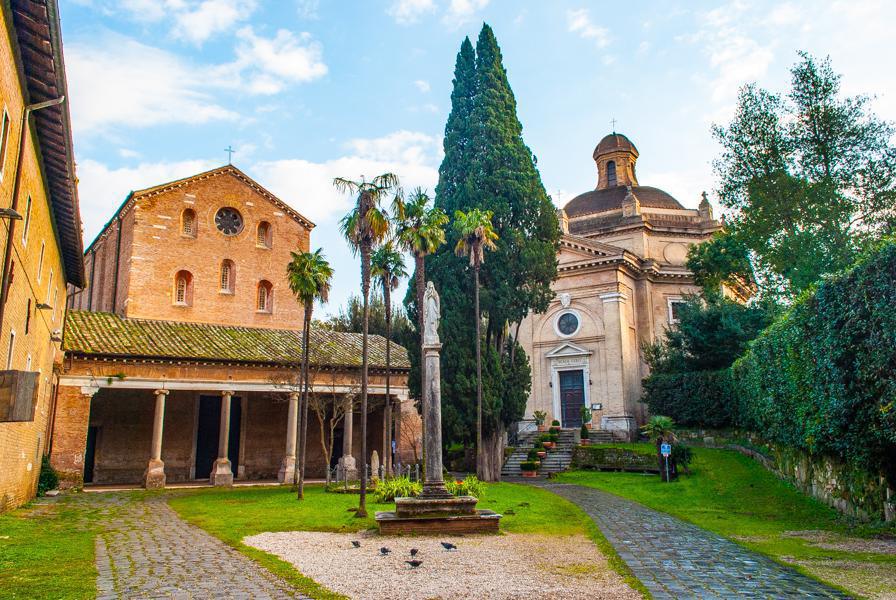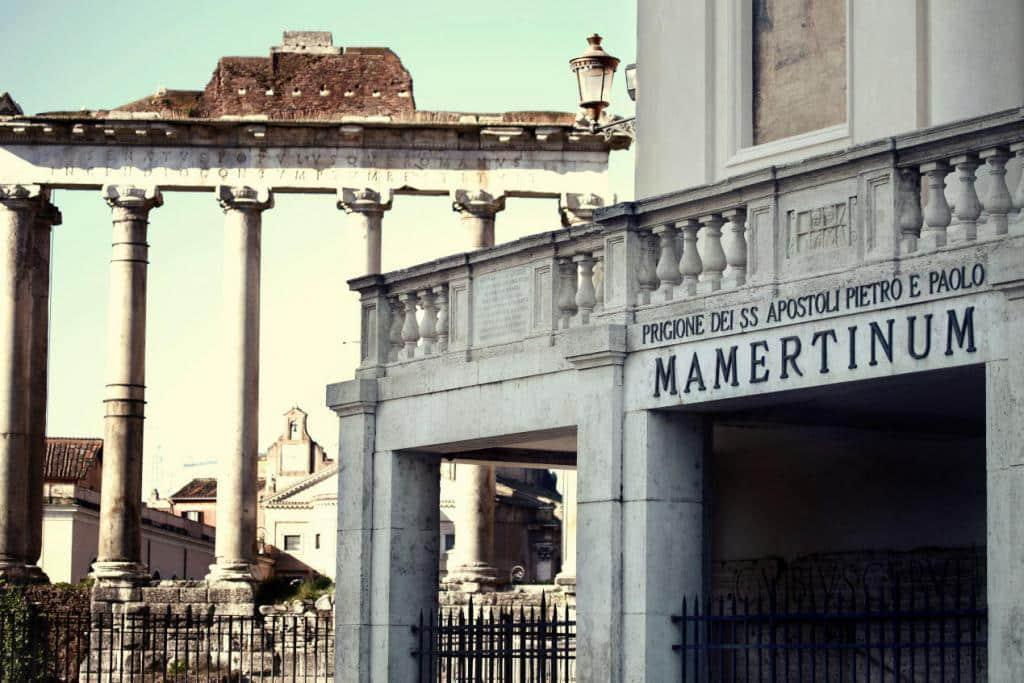The Apostle of the Gentiles
Open Map
St. Paul was one of the most influential figures in the spread of Christianity across the Mediterranean in the first century AD. Known at first as Saul of Tarsus, he was a Roman citizen and a Jew who initially in Jerusalem persecuted the first Christians including the martyrdom of Stephen, the first martyr. He experienced a dramatic vision on the Road to Damascus when Jesus appeared to him. Saul asked, "Who are you, Lord?" He replied, "I am Jesus, whom you are persecuting."
After his conversion and acceptance by St. Peter as a disciple, Paul made missionary journeys throughout the Roman Empire evangelizing both Jews and Gentiles and establishing Christian communities. He wrote letters to the first Christians in cities and regions where he previously preached to encourage them to keep the Faith in his absence. These letters were incredibly influential in the early church and provided the people of God with a foundation for theological understanding, the relationship between faith and works, moral conduct, pastoral guidance, and ecumenism between Christian communities.
List of St. Paul's Letters in the New Testament
St. Paul lived in Rome for two years under house arrest from 61 to 63 AD. During his imprisonment, he wrote the epistles to the Ephesians, Philippians, Colossians, and Philemon. According to tradition, he was martyred in Rome near the location of Aquae Salviae, which is became the location of the Abbey of Tre Fontane. He was condemned to death and beheaded by order of Emperor Nero, who had commanded the persecution of Christians following the Great Fire of Rome in 64 AD. While the exact date of St. Paul's execution is unknown, one tradition holds that both Sts. Peter and Paul were martyred the same day on June 29th. This date would later become the Feast of Sts. Peter Paul.
Footsteps of St. Paul
Estimated Time: 6 Hours
Locations in Rome
-
Papal Basilica of St. Paul Outside the Walls (St. Paul's Tomb)
-
Tre Fontane Abbey (Site of St. Paul's Martyrdom)
-
Mammertine Prison (Sts. Peter and Paul Imprisonment)
-
Church of Santa Maria in Via Lata (First Underground House of Sts. Peter and Paul)
-
Basilica of San Paolo alla Regola (Second Underground House of St. Paul)
-
Church of Santa Prisca
-
Appian Way
Papal Basilica of St. Paul Outside the Walls
Location of the Tomb of Saint Paul
Built over the burial place of Saint Paul, this Basilica is known for its’ rich history and renowned cloister. Consecrated in the year 330 by Pope Sylvester, the original structure was much smaller than its current size as the 10th largest church in the world. Facing east towards Jerusalem, additions over the years gave the church its’ iconic columned courtyard and the famous Gothic ciborium created by Arnolfo di Cambio in 1285. Up until the consecration of Saint Peter’s Basilica, Saint Paul Outside the Walls held the title of largest Basilica in Rome.
During the night of July 15, 1823 a devastating fire destroyed the majority of the Basilica. Pope Leo XII appealed to faithful around the world and the church was rebuilt identical to how it had been before the fire. Donors included Tsar Nicholas I and King Fouad of Egypt and the site became the largest construction event of the century. .
On December 10 of 1854, the "new" Basilica was consecrated by Pope Pius IX where the Dogma of the Immaculate Conception was also proclaimed.
See Location & Videos
Tre Fontane Abbey
Rome’s Sacred Site of Saint Paul’s Martyrdom
The Tre Fontane abbey complex, located along Via Laurentina, is linked to the legend of Saint Paul's martyrdom in 67 AD. The abbey features the Arch of Charlemagne and comprises three churches built on the martyrdom site.
The largest, Saints Vincent and Anastasius, has a Latin cross plan and an austere brick façade. Santa Maria Scala Coeli, built in 1582, commemorates martyred Christian legionaries. San Paolo alle Tre Fontane, dating to the 5th century, houses three miraculous fountains.
The surrounding area, once malarial, was transformed by Trappist monks into a eucalyptus forest.
See Location & Videos
Mammertine Prison
Location of Sts. Peter and Paul's Imprisonment
The Church of San GUiseppe dei Falegnam stands on the Mammertine Prison, or Carcer Tullianum, the oldest prison in Rome, built by King Ancus Marcius in the 7th century BC. Made up of two superimposed rooms, the monument housed the ancient Church of San Pietro in Carcere, where, according to legend, the apostles Peter and Paul were locked up before suffering martyrdom; in 1540, the place was rented to the Archconfraternity of Carpenters.
In 2018, the ceiling of the church collapsed with the Archconfraternity of Carpenters celebrating their first mass after restorations in 2021.
See Location & Videos
Church of Santa Maria in Via Lata
Underground House of Sts. Peter and Paul
The Church of Santa Maria in Via Lata boasts both a baroque style church at street level and an underground crypt that dates to the arrival of the early Christians and has been verified as being a church from the 3rd century AD. According to local tradition, the underground is believed to be one of two possible locations where St. Paul was placed under house arrest during his first visit to Rome. St. Peter is also believed to stay at the location as one of his early residences with the first Christians. The place also served as a "Diakoni" as early as the 7th century AD, which were distribution centers to the poor and vulnerable that were designated by the popes during ancient times and the middle ages.
See Location & Videos
Basilica of San Paolo alla Regola
Built over One of the Houses of St. Paul
According to local tradition, this is one of two houses where St. Paul possibly lived under house arrest during his frist trip to Rome. One can enter the granary, which has been converted into a chapel, where it is believed that St. Paul met with early Christians, shared the Word of God, and wrote letters to Christian communities throughout the Meditteranean. These included letters to the Phillipians, Colossians, Ephesians, and Philemon.
The current church was founded by Pope Sylvester I in the 4th century. It is located near the Jewish Ghetto and Campo di Fiori.
See Location & Videos
Church of Santa Prisca
House of Prisca and Aquila, companions of St. Paul
According to local tradition, this was the location of the house of Sts. Prisca and Aquila, the married tent-making couple who accompanied St. Paul on his voyages from Asia Minor to Rome. They were influential figures in the establishment of the first Christian communities. It is believed that St. Paul also resided here for a time, and St. Peter also performed baptisms in what is today a side chapel in the church.
The present day church dates to the 4th-5th century AD and was restored by Pope Adrian I in the 8th century.







